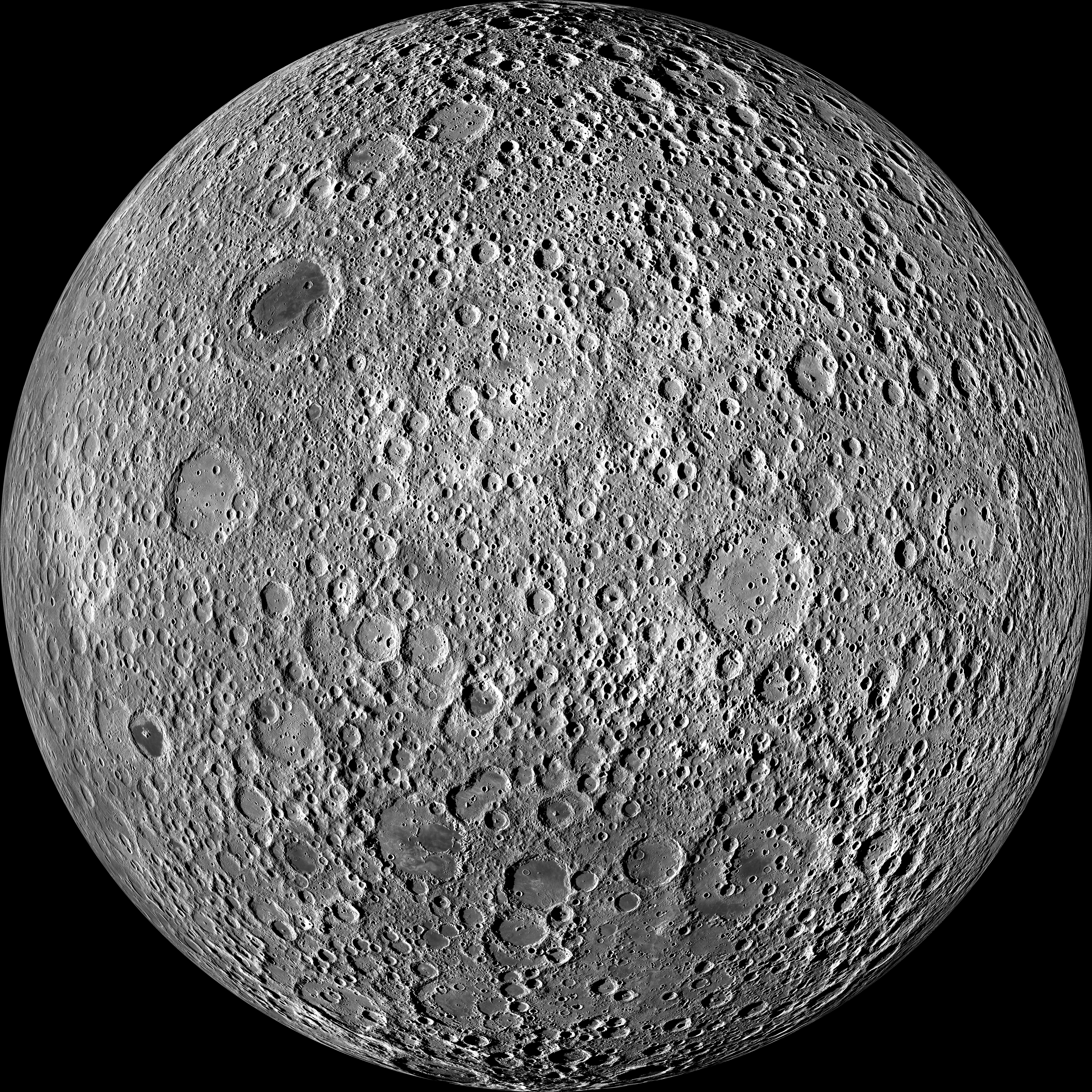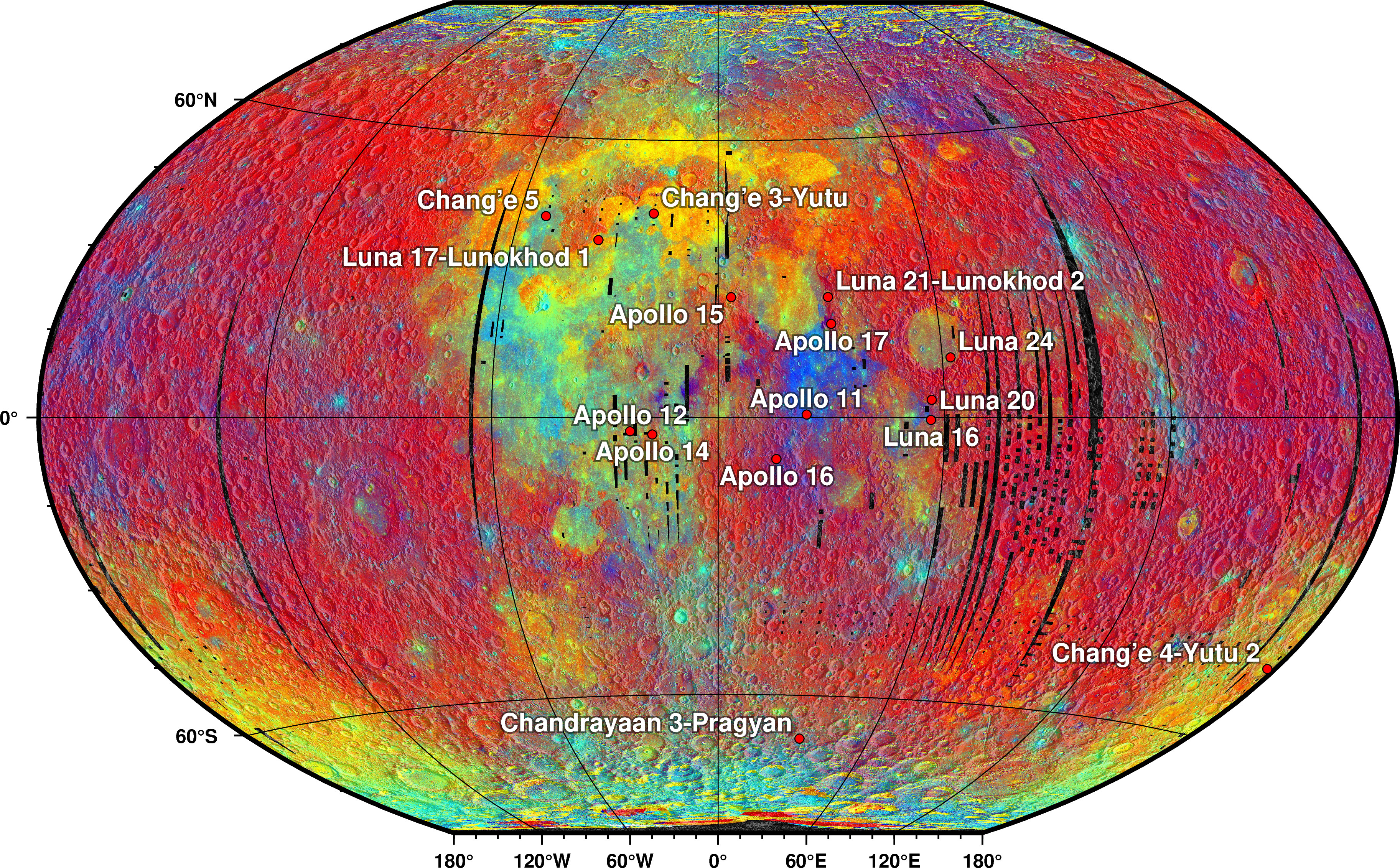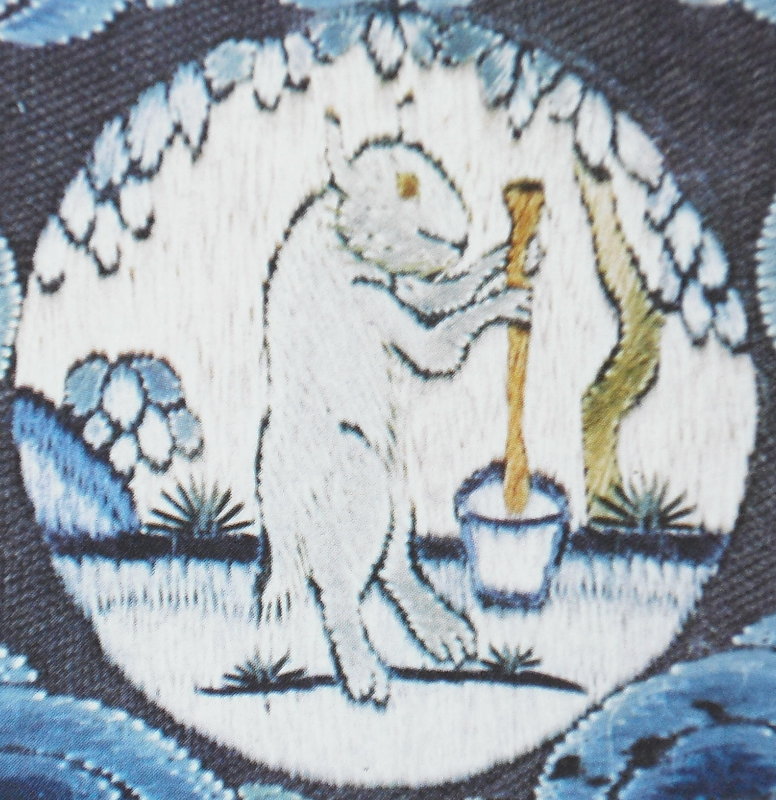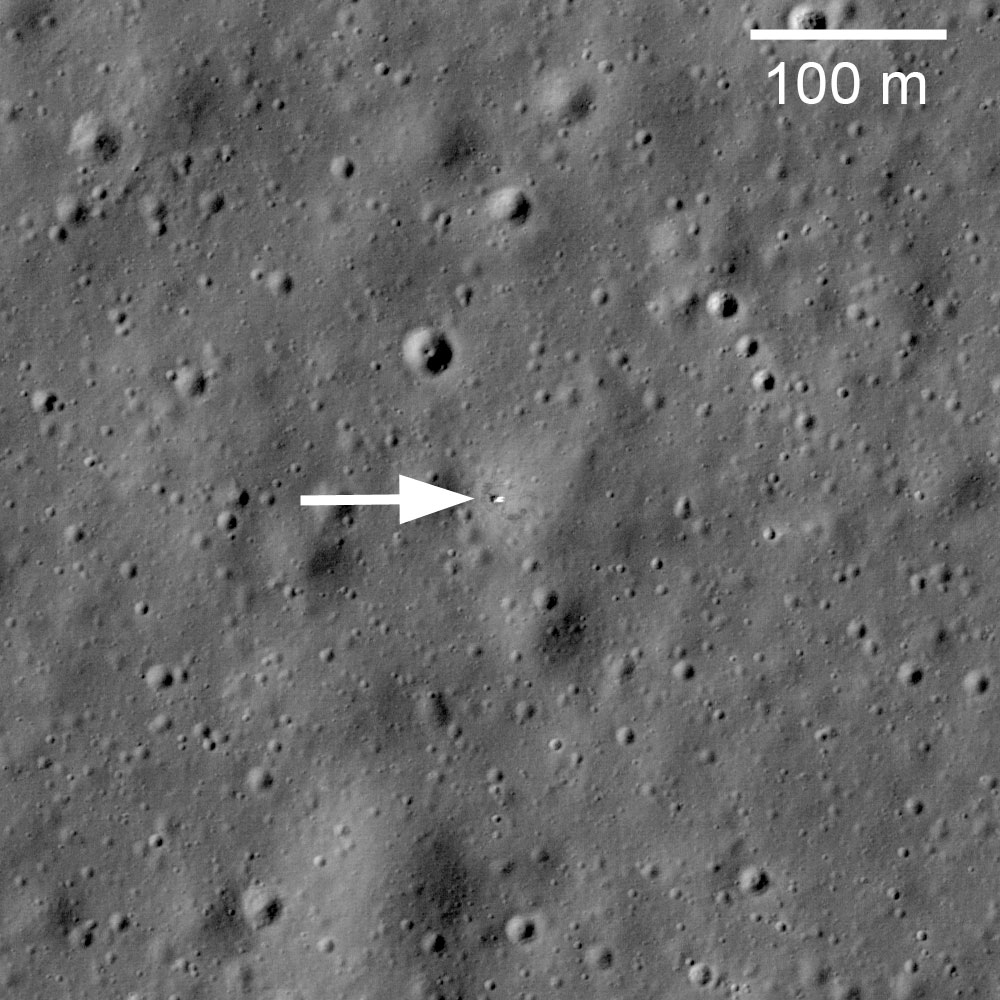|
Yutu-2
''Yutu-2'' is the robotic lunar rover component of China National Space Administration, CNSA's Chang'e 4 mission to the Moon, launched on 7 December 2018 18:23 UTC, it entered lunar orbit on 12 December 2018 before making the first soft landing on the far side of the Moon on 3 January 2019. ''Yutu-2'' is currently operational as the longest-lived lunar rover and the first lunar rover traversing the far side of the Moon. By January 2022, ''Yutu-2'' had travelled a distance of more than along the Moon's surface. Overview The total landing mass is . Both the stationary lander and ''Yutu-2'' rover are equipped with a radioisotope heater unit (RHU) in order to heat their subsystems during the long lunar nights,China Shoots for the Moon's Far Side (PDF) IEEE.org. 2018. while electrical power i ... [...More Info...] [...Related Items...] OR: [Wikipedia] [Google] [Baidu] |
Chang'e 4
Chang'e 4 (; ) is a robotic spacecraft mission, part of the second phase of the Chinese Lunar Exploration Program. China achieved humanity's first soft landing on the far side of the Moon, on 3 January 2019. A communication relay satellite, , was first launched to a halo orbit near the Earth–Moon L2 point in May 2018. The robotic lander and ''Yutu-2'' () rover were launched on 7 December 2018 and entered lunar orbit on 12 December 2018, before landing on the Moon's far side. The mission is the follow-up to Chang'e 3, the first Chinese landing on the Moon. The spacecraft was originally built as a backup for Chang'e 3 and became available after Chang'e 3 landed successfully in 2013. The configuration of Chang'e 4 was adjusted to meet new scientific and performance objectives. Like its predecessors, the mission is named after Chang'e, the Chinese Moon goddess. In November 2019, Chang’e 4 mission team was awarded Gold Medal by the Royal Aeronautical Society. In October ... [...More Info...] [...Related Items...] OR: [Wikipedia] [Google] [Baidu] |
Chinese Lunar Exploration Program
The Chinese Lunar Exploration Program (CLEP; ), also known as the Chang'e Project () after the Chinese moon goddess Chang'e, is an ongoing series of robotic Moon missions by the China National Space Administration (CNSA). The program incorporates lunar orbiters, landers, rovers and sample return spacecraft, launched using Long March rockets. Launches and flights are monitored by a telemetry, tracking, and command (TT&C) system, which uses radio antennas in Beijing and antennas in Kunming, Shanghai, and Ürümqi to form a VLBI antenna. A proprietary ground application system is responsible for downlink data reception. Ouyang Ziyuan, a geologist, chemical cosmologist, and the program's chief scientist, was among the first to advocate the exploitation not only of known lunar reserves of metals such as titanium, but also of helium-3, an ideal fuel for future nuclear fusion power plants. Ye Peijian serves as the program's chief commander and chief designer. Scientist Sun Jia ... [...More Info...] [...Related Items...] OR: [Wikipedia] [Google] [Baidu] |
Lunar Rover
A lunar rover or Moon rover is a space exploration vehicle designed to move across the surface of the Moon. The Apollo Program's Lunar Roving Vehicle was driven on the Moon by members of three American crews, Apollo 15, 16, and 17. Other rovers have been partially or fully autonomous robots, such as the Soviet Union's Lunokhods and the Chinese '' Yutus''. Three countries have had operating rovers on the Moon: the Soviet Union, the United States and China. An Indian mission failed while Japan and Greece currently have planned missions. Past missions Lunokhod 1 Lunokhod 1 (Луноход) was the first of two polycrystalline-panel-powered robotic lunar rovers landed on the Moon by the Soviet Union as part of its Lunokhod program after a previous unsuccessful attempt of a launch probe with Lunokhod 0 (No.201) in 1969. The spacecraft which carried Lunokhod 1 was named Luna 17. The spacecraft soft-landed on the Moon in the Sea of Rains on November 1970. Lunokhod was the first ... [...More Info...] [...Related Items...] OR: [Wikipedia] [Google] [Baidu] |
Far Side Of The Moon
The far side of the Moon is the lunar hemisphere that always faces away from Earth, opposite to the Near side of the Moon, near side, because of synchronous rotation in the Moon's orbit. Compared to the near side, the far side's terrain is rugged, with a multitude of impact craters and relatively few flat and dark lunar mare, lunar maria ("seas"), giving it an appearance closer to other barren places in the Solar System such as Mercury (planet), Mercury and Callisto (moon), Callisto. It has one of the largest craters in the Solar System, the South Pole–Aitken basin. The hemisphere is sometimes called the "dark side of the Moon", where "dark" means "unknown" instead of "lacking sunlight" each side of the Moon experiences two weeks of sunlight while the opposite side experiences two weeks of night. About 18 percent of the far side is occasionally visible from Earth due to libration. The remaining 82 percent remained unobserved until 1959, when it was photographed by the Sovie ... [...More Info...] [...Related Items...] OR: [Wikipedia] [Google] [Baidu] |
Yutu (rover)
''Yutu'' () was a robotic lunar rover that formed part of the Chinese Chang'e 3 mission to the Moon. It was launched at 17:30 UTC on 1 December 2013, and reached the Moon's surface on 14 December 2013. The mission marks the first soft landing on the Moon since 1976 and the first rover to operate there since the Soviet Lunokhod 2 ceased operations on 11 May 1973. The rover encountered operational difficulties toward the end of the second lunar day after surviving and recovering successfully from the first 14-day lunar night. It was unable to move after the end of the second lunar night, though it continued to gather useful information for some months afterward. In October 2015, ''Yutu'' set the record for the longest operational period for a rover on the Moon. On 31 July 2016, ''Yutu'' ceased to operate after a total of 31 months, well beyond its original expected lifespan of three months. In total, while working on the Moon, the rover was able to travel a distance of 114 met ... [...More Info...] [...Related Items...] OR: [Wikipedia] [Google] [Baidu] |
Rover (space Exploration)
A rover (or sometimes planetary rover) is a planetary surface exploration device designed to move across the solid surface on a planet or other planetary mass celestial bodies. Some rovers have been designed as land vehicles to transport members of a human spaceflight crew; others have been partially or fully autonomous robots. Rovers are typically created to land on another planet (other than Earth) via a lander (spacecraft), lander-style spacecraft, tasked to collect information about the terrain, and to take crust (geology), crust samples such as dust, soil, rocks, and even liquids. They are essential tools in space exploration. Features Rovers arrive on spacecraft and are used in conditions very distinct from those on the Earth, which makes some demands on their design. Reliability Rovers have to withstand high levels of acceleration, high and low temperatures, pressure, dust, corrosion, cosmic rays, remaining functional without repair for a needed period of time. ... [...More Info...] [...Related Items...] OR: [Wikipedia] [Google] [Baidu] |
Moon Rabbit
The Moon rabbit or Moon hare is a mythical figure in East Asian and indigenous American folklore, based on pareidolia interpretations that identify the dark markings on the near side of the Moon as a rabbit or hare. In East Asia, the rabbit is seen as pounding with a mortar and pestle, but the contents of the mortar differ among Chinese, Japanese, Korean and Vietnamese folklore. In Chinese folklore, the rabbit is often portrayed as a companion of the Moon goddess Chang'e, constantly pounding the elixir of life for her and some show the making of cakes or rice cakes; but in Japanese and Korean versions, the rabbit is pounding the ingredients for mochi or some other type of rice cakes; in the Vietnamese version, the Moon rabbit often appears with Hằng Nga and Chú Cuội, and like the Chinese version, the Vietnamese Moon rabbit also pounding the elixir of immortality in the mortar. In some Chinese versions, the rabbit pounds medicine for the mortals and some include making of m ... [...More Info...] [...Related Items...] OR: [Wikipedia] [Google] [Baidu] |
Geology Of The Moon
The geology of the Moon (sometimes called selenology, although the latter term can refer more generally to "lunar science") is quite different from that of Earth. The Moon lacks a true atmosphere, which eliminates erosion due to weather. It does not have any known form of plate tectonics, it has a lower gravity, and because of its small size, it cooled faster. The complex geomorphology of the lunar surface has been formed by a combination of processes, especially impact cratering and volcanism. The Moon is a differentiated body, with a crust, mantle, and core. Geological studies of the Moon are based on a combination of Earth-based telescope observations, measurements from orbiting spacecraft, lunar samples, and geophysical data. Six locations were sampled directly during the crewed Apollo program landings from 1969 to 1972, which returned of lunar rock and lunar soil to Earth In addition, three robotic Soviet Luna spacecraft returned another of samples, and the Chine ... [...More Info...] [...Related Items...] OR: [Wikipedia] [Google] [Baidu] |
Lunokhod 1
''Lunokhod 1'' ( Russian: Луноход-1 ("Moonwalker 1"), also known as Аппарат 8ЕЛ № 203 ("Device 8EL No. 203")) was the first of two robotic lunar rovers landed on the Moon by the Soviet Union as part of its Lunokhod program. The ''Luna 17'' spacecraft carried ''Lunokhod 1'' to the Moon in 1970. ''Lunokhod 1'' was the first remote-controlled robot "rover" to freely move across the surface of an astronomical object beyond the Earth. It was also the first wheeled craft on another celestial body. Lunokhod 0 (No.201), the previous and first attempt to do so, launched in February 1969 but failed to reach orbit. Although only designed for a lifetime of three lunar days (approximately three Earth months), ''Lunokhod 1'' operated on the lunar surface for eleven lunar days (321 Earth days) and traversed a total distance of 10.54 km. Rover description ''Lunokhod 1'' was a lunar vehicle formed of a tub-like compartment with a large convex lid on eight independently p ... [...More Info...] [...Related Items...] OR: [Wikipedia] [Google] [Baidu] |
BBC News
BBC News is an operational business division of the British Broadcasting Corporation (BBC) responsible for the gathering and broadcasting of news and current affairs in the UK and around the world. The department is the world's largest broadcast news organisation and generates about 120 hours of radio and television output each day, as well as online news coverage. The service maintains 50 foreign news bureaus with more than 250 correspondents around the world. Deborah Turness has been the CEO of news and current affairs since September 2022. In 2019, it was reported in an Ofcom report that the BBC spent £136m on news during the period April 2018 to March 2019. BBC News' domestic, global and online news divisions are housed within the largest live newsroom in Europe, in Broadcasting House in central London. Parliamentary coverage is produced and broadcast from studios in London. Through BBC English Regions, the BBC also has regional centres across England and national news c ... [...More Info...] [...Related Items...] OR: [Wikipedia] [Google] [Baidu] |
Ground-penetrating Radar
Ground-penetrating radar (GPR) is a geophysical method that uses radar pulses to image the subsurface. It is a non-intrusive method of surveying the sub-surface to investigate underground utilities such as concrete, asphalt, metals, pipes, cables or masonry. This nondestructive method uses electromagnetic radiation in the microwave band ( UHF/ VHF frequencies) of the radio spectrum, and detects the reflected signals from subsurface structures. GPR can have applications in a variety of media, including rock, soil, ice, fresh water, pavements and structures. In the right conditions, practitioners can use GPR to detect subsurface objects, changes in material properties, and voids and cracks. GPR uses high-frequency (usually polarized) radio waves, usually in the range 10 MHz to 2.6 GHz. A GPR transmitter and antenna emits electromagnetic energy into the ground. When the energy encounters a buried object or a boundary between materials having different permittivities, it ma ... [...More Info...] [...Related Items...] OR: [Wikipedia] [Google] [Baidu] |
Lunar Water
Lunar water is water that is present on the Moon. Diffuse water molecules can persist at the Moon's sunlit surface, as discovered by NASA's SOFIA observatory in 2020. Gradually water vapor is decomposed by sunlight, leaving hydrogen and oxygen lost to outer space. Scientists have found water ice in the cold, permanently shadowed craters at the Moon's poles. Water molecules are also present in the extremely thin lunar atmosphere. Water (H2O), and the chemically related hydroxyl group (-OH), exist in forms chemically bound as hydrates and hydroxides to lunar minerals (rather than free water), and evidence strongly suggests that this is the case in low concentrations as for much of the Moon's surface. In fact, of surface matter, adsorbed water is calculated to exist at trace concentrations of 10 to 1000 parts per million. Inconclusive evidence of free water ice at the lunar poles had accumulated during the second half of the 20th century from a variety of observations suggestin ... [...More Info...] [...Related Items...] OR: [Wikipedia] [Google] [Baidu] |










